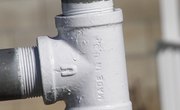
One of the primary principles in the study of statics and dynamics, particularly in fluids, is the conservation of mass. This principle states that mass is neither created nor destroyed. In engineering analysis, the amount of matter inside a predetermined volume, which is sometimes called a control volume, remains constant as a result of this principle. Mass flux is the measurement of the amount of mass passing in or out of the control volume. The governing equation for calculating mass flux is the continuity equation.
Define the control volume. For example, a common control volume in aeronautics engineering is a wind tunnel test section. This is usually either a rectangular or circular cross section duct that gradually decreases from a larger area to a smaller one. Another name for this type of control volume is a nozzle.
Determine the cross sectional area you are measuring the mass flux through. The calculations are easier if the velocity vectors passing through are perpendicular to the area, but this is not required. For a nozzle, the cross sectional area is usually the inlet or the outlet.
Determine the velocity of the flow passing through the cross sectional area. If the velocity vector is perpendicular, as in a nozzle, you only need to take the magnitude of the vector.
vector R = (r1) i + (r2) j + (r3) k magnitude R = sqrt(r1^2 + r2^2 + r3^2)
Determine the density of the mass flow at the cross sectional area. If the flow is incompressible, the density will be constant throughout. If you don't already have the density available, as is common in theoretical problems, you may need to use certain lab equipment such as thermocouples or pitot tubes to measure the temperature (T) and pressure (p) at the point you wish to measure mass flux. Then you can calculate the the density (rho) using the perfect gas equation:
p = (rho)RT
where R is the perfect gas constant specific to the flow material.
Use the continuity equation to calculate the mass flux at the surface. The continuity equation comes from the principle of conservation of mass and is typically given as:
flux = (rho) * A * V
Where "rho" is density, "A" is cross sectional area, and "V" is velocity at the surface being measured. For example, if you had a nozzle with a circular inlet with a radius of 3 feet, A = pi * r^2 = 3.14159 * 3^2 = 28.27 square feet. If the flow is traveling at 12 ft/s and you determine the density to be 0.0024 slugs/ft^3, then the mass flux is:
0.0024 * 28.7 * 12 = 4132.8 slugs/s
References
- "Fundamentals of Fluid Mechanics;" Bruce R. Munson, et. al.; 1990
- "Theory and Problems of Vector Analysis;" Murray R. Spiegel; 1959
- Florida International University: Aeronautics
Photo Credits
Creatas/Creatas/Getty Images
